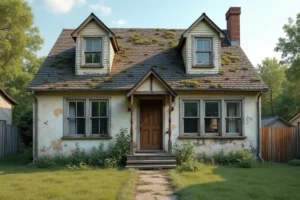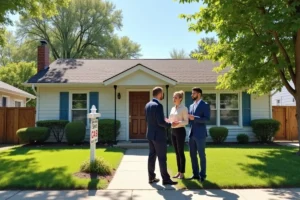Sustainable Home Construction Trends for Modern Households
Sustainable home construction is becoming an essential consideration for modern households seeking to balance comfort, efficiency, and environmental responsibility. Homeowners are increasingly exploring energy-efficient materials, renewable energy systems, and smart home technologies that reduce overall environmental impact.
Integrating sustainable design principles during construction not only minimizes resource consumption but also improves long-term durability and lowers operational costs. This shift reflects a growing awareness of climate change and the need for homes that contribute positively to the environment rather than deplete it.
Current trends in construction emphasize the use of modular building, recycled materials, and water-efficient systems, highlighting how innovative approaches can merge aesthetics with sustainability. As families prioritize eco-conscious living, construction practices are evolving to support healthier, more resilient homes that align with modern lifestyle demands.
Utilizing Recycled and Reclaimed Materials
Utilizing recycled and reclaimed materials is essential for sustainable home construction, as it saves finite resources and reduces landfill waste. Salvaged wood adds warmth to interiors, while recycled metals and glass can enhance various facets of construction. This practice lowers the embodied energy of homes, decreasing their environmental impact and introducing unique textures and craftsmanship.
Designing for Natural Light and Ventilation
Designing for natural light and ventilation is essential for healthy homes. Strategic placement of windows and skylights enhances daylighting and energy efficiency, while cross-ventilation methods promote airflow and regulate indoor temperatures.
Consulting remodelers can help integrate structural changes with enhancements in lighting and ventilation. Integrating these design elements enriches aesthetic appeal and well-being, creating sustainable and inviting living spaces.
Energy-Efficient Building Materials
Energy-efficient building materials are crucial for sustainable home construction, as they enhance thermal comfort and reduce lifetime emissions. ICFs, SIPs, and Low-E windows are examples of key items that efficiently decrease heat transfer. Insulation, roofing, and high-performance glazing all improve energy efficiency and reduce utility bills.
Builders are increasingly adopting recycled concrete alternatives, as well as rapidly renewable bamboo and certified items with the ENERGY STAR label, to achieve climate goals and building laws while combining durability and aesthetics.
Innovative Home Designs
Innovative home designs are emphasizing adaptability and resource efficiency. Key features include flexible layouts with multipurpose rooms and sliding partitions, allowing families to adjust spaces according to their needs while minimizing costly extensions. Innovations like green roofs and living walls contribute to insulation, rainwater absorption, air purification, and urban biodiversity. Additionally, smart home automation integrates lighting, heating, and water use, enabling homeowners to monitor and reduce consumption for an efficient living environment.
Prefabricated and Tiny Homes
Prefabricated and modular homes are rapidly emerging in the eco-friendly housing market, built in factories using sustainable materials to enhance energy efficiency and minimize waste. Their quick assembly on-site reduces environmental disruption and construction time.
Similarly, the tiny home movement attracts those seeking minimalism and lower costs, with dwellings under 400 square feet that require fewer materials and energy, appealing to environmentally conscious individuals and small families.
Looking Ahead: Sustainable Living in Modern Homes
Sustainable home construction is a long-term approach that focuses on creating comfortable and efficient living spaces, minimizing ecological footprints through the use of recycled materials, energy-efficient systems, and innovative designs. Practices such as modular and tiny homes exemplify the coexistence of sustainability and practicality, providing adaptable solutions for diverse lifestyles. As awareness of these strategies increases, modern homes can meet current needs while contributing to a healthier planet for future generations.







0